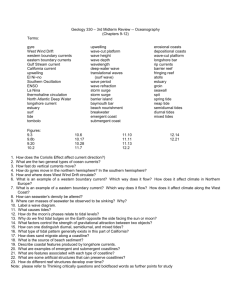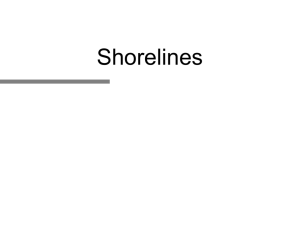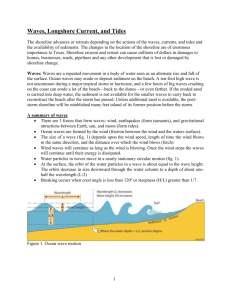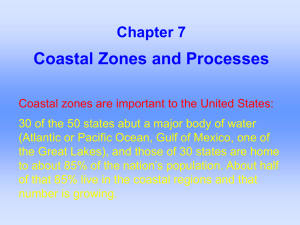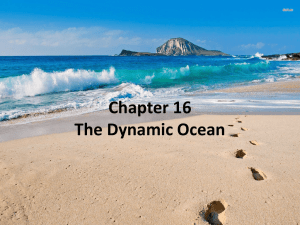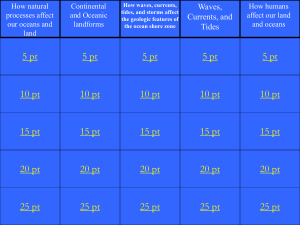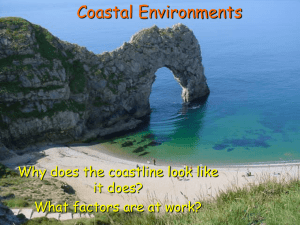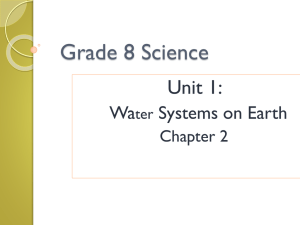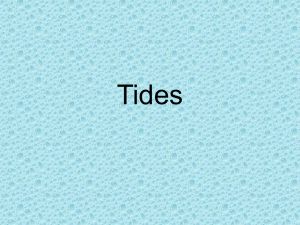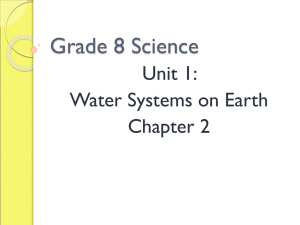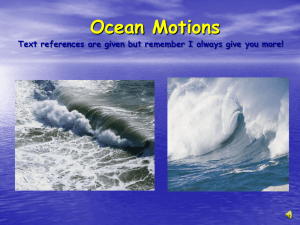ch 16 ppt - ksingerscience
advertisement
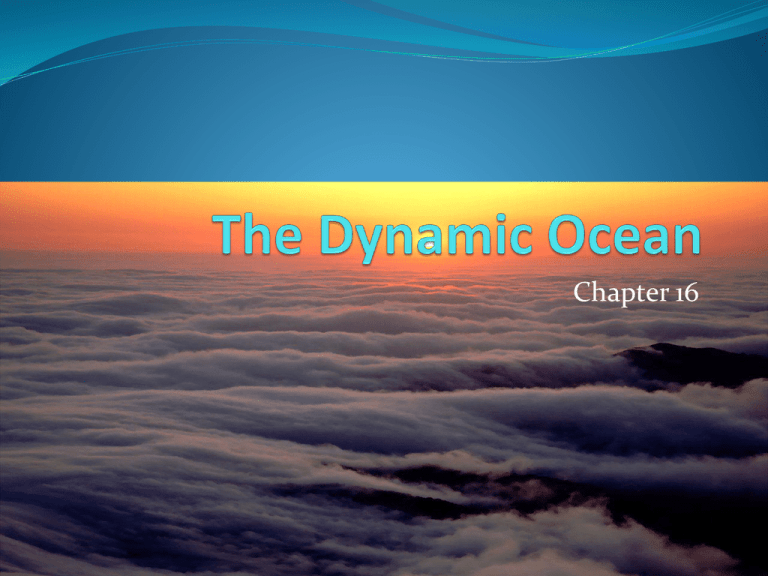
Chapter 16 Ocean current-mass of ocean water that flows from one place to another Surface currents movements of water that flow horizontally in the upper part of the ocean’s surface Upwelling rise of cold water from deeper layers to replace warmer surface water brings greater concentrations of dissolved nutrients, such as nitrates and phosphates, to the ocean surface Density currents vertical currents of ocean water that result from density differences among water masses Waves Where do waves come from? The energy from strong winds Parts of a wave A –crest B –trough C –wavelength D –amplitude Wave Period and Speed Wave period the time it takes for a complete wave to pass a given point Wave speed how fast the waves are traveling Wavelength ÷ period Factors that Affect the height, length and period of a wave Speed of the wind Duration how long the wind will blow Fetch the length of water surface over which the wind blows in a constant direction Breakers Spilling breakers over-steepened waves that are unstable and the top spills over. Occur on flat beaches. Plunging breakers Hawaii (large splash) Types of Waves Wind waves Tsunamis tidal waves formed by movements on a fault line Internal waves Occurs within the water and not on the surface. “dead water” What are they and how do they work? Tides What are Tides? changes in elevation of the ocean surface What causes Tides? Gravitational forces of the moon and sun Tidal Range Vertical distance between the high and low tides. Vary from place to place and week to week. Many factors (shape of the coastline, configuration of ocean basins, and water depth) influence tidal ranges. Spring Tides Spring Tides Occur during the new and full moons All gravitational forces are added together Extreme high and low tides High tidal range Neap Tides Neap Tides During the 1st and 3rd quarters of the Moon Gravitational forces are offset Tidal range is the smallest value Tides Tides occur 50 minutes later due to … Rotation pattern of earth and moon. This is known as a lunar day Tidal Patterns Diurnal (daily) one high and one low tide each lunar day. Occurs at Pensacola, Fl. And the Gulf coast. Semidiurnal (semi-daily) 2 high and 2 low tides: each high and low tides are similar to the preceding high and low. Occurs in the Atlantic coast Mixed 2 high and 2 low tides each day. Each high and low tides are different from each other. Occurs on the west coast. Coast, Beaches and Shores Beach accumulation of sediment (sand and gravel) that occupies a portion of the shore. (moving) Coast where the land meets the sea. “lands edge that boarders the sea” Shore part of the coast in which the outer limits of wave action influences the land. Forces that act on a shore Wave Impact changes the shape Abrasion most intense Wave refraction sediment transportation Longshore transport works with refraction Longshore Currents Longshore current caused by waves which approach the shore at an angle –move sand grains along the beach (responsible for the beach erosion on the barrier islands) Littoral drift the movement of sand along the beach because of longshore currents Rip Currents Rip currents water current formed when water moves to the sea through a break in an offshore bar. Erosion Features Sea Arches form when two caves are eroded and unite. Spit elongated ridge of sand that projects from the land into the mouth of a bay and hooks. Erosion Features Tombolo ridge of sand that connects an island to the mainland or another island. Baymouth Bar sandbar that has completely crossed a bay, sealing it. Barrier island Narrow sandbars parallel to, but separated from the mainland. Protective Structures Groin/Jetty structures that are at right angles to the beach to trap sand. Breakwater/Seawall structures built parallel to the shoreline to protect the coast from powerful breakers. Bulkhead structure separating land and water areas –reduces erosion. Beach Nourishment Addition of large quantities of sand to the beach system
